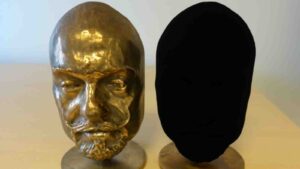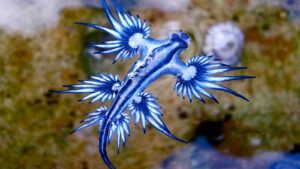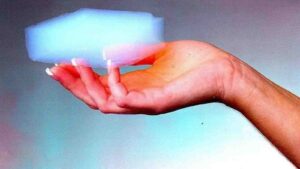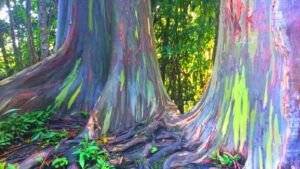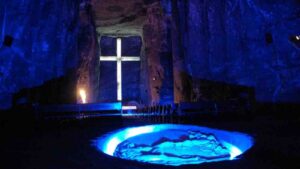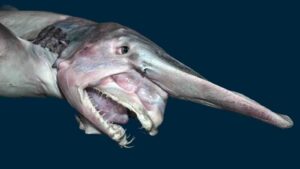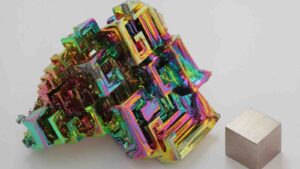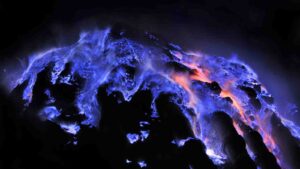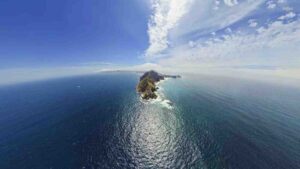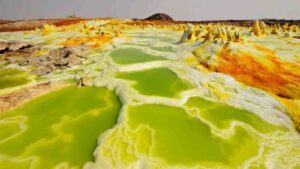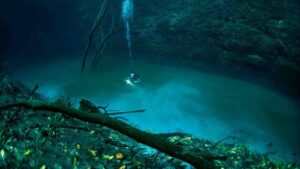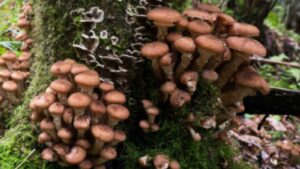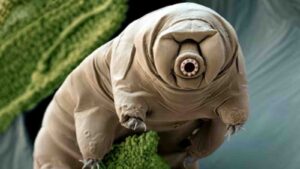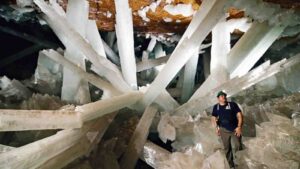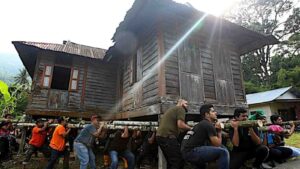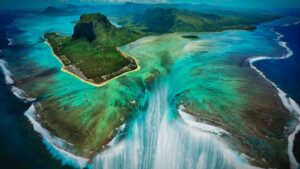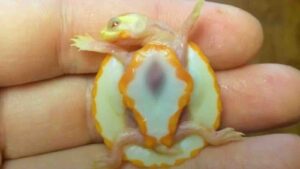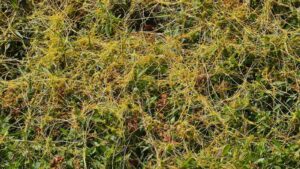Things You Will See For The First Time In Your Life
Summary
Ultimate Fact Presents TOP 20 Things You Will See For The First Time In Your Life. Before we begin, click that like button to inspire us. Also, subscribe to our channel and click the notification bell to be inspired by […]

Ultimate Fact Presents TOP 20 Things You Will See For The First Time In Your Life. Before we begin, click that like button to inspire us. Also, subscribe to our channel and click the notification bell to be inspired by this type of ultimate fact.
These are not the 8th wonder of the world. These are about our mysterious planet, which you will see for the first time. Seeing and learning about unusual things for the first time is always impressive.
You are alive, having two beautiful eyes that want to see and devour. Why not be the first to let you know about these earth spectacles? Take a peek to learn about these incredible Internet things you will see for the first time in your life!
Video: Things You Will See For The First Time In Your Life
Vantablack
Vantablack is a nanomaterial that is darker than any other substance on Earth. It was developed in the UK by Surrey NanoSystems in 2015 and is actually a collection of vertical carbon tubes that are “grown” on a substrate.
Vantablack absorbs 99.98 percent of the light that hits its surface. This means that the human eye technically sees nothing when it looks at VantaBlack, making it the closest thing to staring into a black hole.
The blue angel sea slug
Glaucus Atlanticus is a species of sea slug nicknamed the “blue angel.” This otherworldly creature is as rare as it is beautiful and is only found on the coasts of South Africa and Australia.
The slug’s mesmerizing looks belie a dangerous nature.
The blue angel is carnivorous and feeds on other venomous sea creatures, such as the Portuguese man o’ war. It collects the venom from its prey in specialized sacs, concentrates it, then uses the venom on future prey.
Video: Things You Will See For The First Time In Your Life
Slice of Aerogel
Aerogel is an ultralight material made from gel and gas. It’s been nicknamed “frozen smoke” or “solid cloud” because of its ethereal appearance.
Scientists have created more than a dozen recipes for different types of aerogel, but they all share a similar process: mix chemicals together, let them settle into a wet gel, and then suck all of the liquid out. The result is a substance of extremely low density that is actually 99 percent air.
Because it’s made primarily of air and air is such a terrible heat conductor, placing a layer of Aerogel between a flower and a flame will protect the flower from getting destroyed.
Rainbow eucalyptus trees
The Eucalyptus Deglupta tree may look like it has fallen out of a Dr. Seuss book, but it actually grows in Indonesia, Papua New Guinea, and the Philippines. This unique tree has multicolored bark that features bright blue, orange, purple, green, and maroon streaks.
The unusual colors are a side effect of the tree’s shedding; according to Missouri Botanical Garden, as strips of bark peel away, the tree’s bright green inner bark is revealed. This inner layer slowly matures and turns a range of colors.
cathedral made of salt
The Salt Cathedral of Zipaquirá is an underground Roman Catholic Church in Cundinamarca, Colombia, that was excavated from a salt mine in 1954. It is completely made of salt and is located 180 meters below the surface of the small town of Zipaquirá.
The cathedral includes a giant salt cross and can accommodate up to 10,000 people, though it has never been filled to capacity.
Goblin sharks
Goblin sharks are a rare species of deep-sea shark that are sometimes referred to as “living fossils.” They are the only known remaining members of the ancient Mitsukurinidae family of sharks.
Goblin sharks are notable for their distinctive elongated jaws, which are filled with nail-like teeth. They are able to detect the electrical currents emitted by other animals and rapidly extend their jaws in order to snatch up prey.
It’s impossible to fully appreciate how horrifying this is without seeing footage of a goblin shark attacking its prey. This creature was actually the inspiration for the Neomorph in Alien Covenant, according to Digital Spy.
Bismuth
You may remember the chemical element bismuth from your high school chemistry class, but you probably had no idea that it has a colorful, iridescent appearance and is a definite must-see for the first time in your life.
Bismuth has a unique “stair step” growth pattern in which the outer edges form more quickly than the inner areas, according to Live Science. This results in a crystalline structure that appears to be made of interlocking rainbow squares.
volcano with blue lava:
Indonesia’s Kawah Ijen volcano is an amazing thing you may only see once in your life at least.
It is remarkable for its tendency to emit oozing waves of what appears to be blue and purple lava.
Technically, the lava itself isn’t blue. According to Smithsonian Magazine, the fascinating coloration comes from high quantities of sulfuric gas that emerges along with the lava. When the gas catches fire, it burns with a bright hue that makes the lava appear to be electric blue.
The Voynich manuscript
The Voynich Manuscript is a 240-page medieval tome written in an unknown language that has baffled scholars and codebreakers for years.
The manuscript is believed to have originated sometime between 1404 and 1438. It is filled with enigmatic illustrations and diagrams that seem to depict everything from unusual plants to women with swollen bellies bathing in green pools.
All attempts to translate the book’s text or identify the plants depicted in it have failed.
In January 2018, a group of Canadian computer scientists announced that they may have had some limited success decoding parts of the manuscript using AI. The researchers, however, admitted that further refinement of the process and input from scholars are needed.
Point Nemo:
Point Nemo is the furthest point from land on Earth. Officially known as the oceanic point of inaccessibility, it’s located in the center of the triangle made by Ducie Island, Motu Nui, which is part of the Easter Island chain, and Maher Island near Antarctica.
It is so far from land that the closest humans to Point Nemo are usually astronauts. The International Space Station orbits the Earth from a distance of about 258 miles, while the closest inhabited spot to Point Nemo is more than 1,670 miles away.
The Danakil Depression looks like the surface of an alien planet:
Ethiopia’s Danakil Depression is home to one of the most bizarre-looking landscapes on Earth.
Located in the Afar Triangle, this surreal spot is dotted with crackling lava pools, neon-colored hot springs, and sparkling salt flats. Poisonous gases swirl around hydrothermal fields, and many of the area’s pools are filled with acid.
underwater lakes and rivers:
Also known as brine pools, underwater lakes are bodies of water that have a much higher salinity, especially saltiness, than the surrounding ocean. The briny water is denser than the rest of the seawater, which causes underwater lakes to form that appear separate from the surrounding sea.
These lakes have distinct waves of their own that lap against the “shoreline,” and submarines can even float on these brine pools when they descend to the ocean floor.
Unfortunately, these lakes also contain high amounts of toxic methane and hydrogen sulfide, so swimming in them would be toxic for humans.
massive fungus:
Whales, redwood trees, and elephants are all very big, but they’re not the largest living organism on the planet by acreage. That title, when looking at sheer size, the Pando tree colony holds the title of the largest living organism by mass and goes to the Armillaria Ostoyae mushroom.
Nicknamed the Humongous Fungus, this mushroom has spread across 2,385 acres of Malheur National Forest in Oregon. The scientists who discovered the fungus in 2017 used DNA testing to determine that all parts of the growth are in fact different segments of the same organism.
The giant mushroom has probably been growing for between 2,400 and 8,650 years, and its caps are said to be quite delicious.
Read More: Richest Persons In The World
Tardigrades
Tardigrades, also called water bears or moss piglets, are fascinating microorganisms that can survive just about anywhere.
They prefer to hang out in moist places like mud or moss, but according to Smithsonian magazine, the creatures can survive in environments at least as cold as -328 degrees Fahrenheit or as hot as 300 degrees Fahrenheit.
Scientists have also found that water bears can survive radiation, boiling liquids, and pressures more than six times that of the deepest part of the ocean, and even the vacuum of space.
cave with white crystals:
Fittingly known as the Cueva de los Cristales or The Cave of Crystals, this enchanting cavern is crisscrossed with gleaming gypsum crystals that dwarf human explorers and yes, belongs in this world of ours.
This mysterious spot was only discovered in 2000 when miners drained the water from a zinc mine beneath Naica, in the Mexican state of Chihuahua.
The sparkling structures are so pure that scientists are unable to date them using conventional techniques. But researchers have discovered what is believed to be a 50,000-year-old bacteria sample within one of the crystals.
In 2017, the mining company that owned the property where the cave is located allowed the cave to reflood.
A similarly magical subterranean treasure, Vietnam’s Hang Son Doong cave, the world’s largest, also remained hidden until relatively recently. Spotted in 1991, the cave hosts a lush rain forest and is big enough for a 747 jumbo jet to comfortably park inside.
Malaysians move their homes:
Things that you will see and amaze is the Malay community in villages to move wooden houses literally by lifting and carrying the structures.
However, this tradition has long been forgotten and is rarely practiced by the current generation.
To relive the tradition, a group of villagers from Kampung Labu Kubong, Lubuk Merbau in Kuala Kangsar, and university students joined hands to move an old wooden house for about 150 meters. They used bamboo and pinang trunks to lash them onto the house’s beams to carry structure.
Malays had the tradition of moving the house back in the day because they wanted to live close to their friends and family.
Undersea Waterfall:
The southwest coast of Mauritius appears to be teetering on the edge of a plunging, underwater waterfall. But the looming abyss and the island’s precarious position are just an illusion.
Swirling ocean currents carrying silt and sand create the forbidding pattern, which is painted atop a relatively innocuous seafloor. You don’t need to wait to see in your life this spectacular view from above because it can be seen in Google Earth imagery.
Some of Its Clouds Are Alive, named as Murmuration:
Sometimes, at dusk, dark-shaped shifting clouds appear near the ground. As they swirl and morph, these clouds can seem positively alive, and it’s because they are. Formed by hundreds or thousands of starlings flying in tandem, the phenomenon is known as a murmuration. This is something you need to witness in your life to feel the inner peace.
Scientists suspect the birds engage in this mesmerizing display when they’re looking for a spot to roost or evading predators. But it’s still a puzzle as to how, exactly, they achieve such exquisite acrobatic synchrony on the fly.
Heart beating outside body:
An albino baby turtle has provoked an outpouring of compassion online because she was born with her heart beating outside of her chest.
Aquilina, known as AquaMike on Instagram, has looked after the albino Pinkbelly Sideneck at home in New Jersey since being given her by his friend, who is a US turtle breeder in America.
But unfortunately for the baby turtle, this means that she has to be kept separate from the other turtles for the foreseeable future. The goal is to keep her deformity clean and her immune system strong.
People have been asking him on Instagram for updates on Hope, where they have labeled her as being a little fighter, absolutely amazing, and beautiful.
Read More: Most Dangerous Banned Kids Toy Ever
Ghost Plant:
The two main types of plants that are naturally without chlorophyll are called the dodders and broomrape. Some other plants don’t make enough chlorophyll due to a condition called chlorosis. Broomrape and the Dodders simply don’t make chlorophyll by nature.
It doesn’t need sunlight and gets energy from flora, which it’s growing on. In return, the plant produces and nourishes the one it’s growing on with nutrients.
Among this list, which one have you seen for the first time and want to see in your real life? Don’t forget to share with us.
That is all for now. Like always, if you enjoyed it, be sure to give us a big thumbs up. To keep up-to-date with all of our awesome videos, be sure to hit the subscribe button and turn on your notifications. Until next time, do take good care of yourself.
